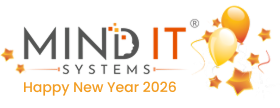
4 Research Essentials That Lay the Groundwork for Winning Software
Launching a new software product often feels urgent. The idea is exciting, the team’s ready to go, and jumping straight into development seems like progress. But skipping research? That’s where most projects start to slide off track.
A McKinsey study revealed that 45% of large IT projects run over budget, and 56% deliver less value than predicted—often due to insufficient early research.
Deadlines creep. Scope expands. What was once a clear vision, becomes a blurred pile of revisions, delays, and missed expectations.
Here’s the reality: Effective software product strategy begins before the first line of code. Research isn’t just about gathering data—it’s about asking the right questions that shape what you build, how you make it, and whether anyone wants it.
This article outlines the four foundational research pillars every business must focus on before developing software products. These pillars are what separate software that merely “works” from software that truly “wins”.
Here we go.
4 Software Product Research Essentials That Ensure Success
Here is the breakdown of the 4 key research essentials that can make or break your product:
1. Know Your Users Before You Design for Them
You don’t want assumptions driving your product roadmap. Instead, validate your thinking by having honest conversations with potential users.
Go beyond surface-level surveys. Sit down with your target audience and ask open-ended questions like:
- What part of your workflow slows you down the most?
- What tools are you currently using—and what frustrates you about them?
- If you could automate just one task, what would it be?
Record and review these interviews, then extract patterns in their pain points. Pay attention to emotional frustration as much as functionality gaps—these are signals of high-impact opportunities.
Once your research starts forming a narrative, map the entire user journey:
- Where do users get stuck?
- What workarounds do they invent?
- Which moments cause them the most friction?
These insights won’t just inform UI/UX decisions—they’ll shape your entire value proposition. This is how a good idea turns into a meaningful solution grounded in real-world context.
Surfacing these insights early helps prevent critical issues impacting software development, such as poor usability, feature misalignment, or low adoption, which are expensive to fix later.
User research done right can transform your product. Learn how we help teams uncover high-impact insights.
2. Translate Research into Aligned Requirements
Research only becomes valuable when it leads to decisive, aligned action. As Shailendra Gupta, our CEO of Mind IT Systems, aptly says: “Once you understand your users’ needs, it’s time to define success and align it with all stakeholders.” To learn more about how research drives product clarity, check out 9 Essential Marketing and Research Tasks for Successful Software Product Development by Jeanette Godreau.
This step ensures that everyone—across leadership, product, tech, and marketing—is building toward a shared vision.
Use your research to facilitate meaningful discussions and align on:
- The core problem the product solves
- What success looks like (e.g., reduced churn, increased efficiency, higher revenue)
- Which features are critical vs. optional
- Any constraints, risks, or technical dependencies
Teams often chase different goals without this alignment, resulting in bloated backlogs, unclear priorities, and wasted development effort. Miscommunication at this stage leads to features no one asked for—or worse, no one uses.
A strong, insight-driven requirements process bridges the gap between what users want, and what the business needs—transforming raw research into focused action and creating a foundation that keeps strategy, execution, and outcomes in sync.
3. Study the Competition—Not to Imitate, But to Differentiate
Competitor analysis helps you find the blind spots they’ve missed. Start by reviewing their products, marketing strategies, and customer reviews:
- What features do they highlight?
- Where are users consistently complaining?
- How do they describe their brand and value?
Platforms like G2, Capterra, Reddit, and LinkedIn can be goldmines for candid user opinions. Look for patterns—frustrations, unmet needs, or confusing interfaces. These are the gaps your product can fill.
According to Gartner, 89% of companies compete primarily on customer experience, not price or product. Differentiation is essential.
Examine their message, too. Are they focused on features or outcomes? Are they speaking to emotional drivers or just specs?
This stage informs how your product can stand out in a crowded market by offering more than parity. Competitive research builds the story you’ll tell and the experience you’ll deliver. It’s a key reason why research and development in software development is significant—it ensures your differentiation is data-driven, not based on assumptions.
Ready to align your software strategy with real user needs and business goals? Let’s discuss how we can help.
4. Choose Tech That Scales with Your Vision
This is where most teams make silent mistakes that turn into big problems later.
Early technical choices—frameworks, architecture, integrations—can enable your product’s long-term success or create bottlenecks.
Your custom software development stack should support:
- Seamless integrations with marketing, sales, and CRM systems
- Mobile responsiveness and fast performance
- SEO capabilities for discoverability
- Flexibility for future content updates or campaign support
Think beyond what your dev team prefers. Ask:
- What will marketing need in 6 months?
- Will customer support have access to the right tools?
- Can we make changes without a full re-deployment?
Making the right decisions now will save time, money, and stress later. This is the silent strength of a well-informed software product strategy—tech decisions rooted in business foresight. Smart decisions today prevent technical debt tomorrow.
Doing the research is a strong start, but without the right marketing tasks, you might miss the mark. To comprehend what those tasks are, take a look at 9 Essential Marketing and Research Tasks for Successful Software Product Development.
Final Thought: Research Fuels Smarter Software Development
Most software doesn’t fail because it’s poorly coded—it fails because it’s poorly researched. Without clarity on the user, the market, and the business context, even the best-built solutions can flop. Solid research reduces risk, sharpens your roadmap, and aligns every stakeholder around a shared vision.
Want to build with confidence? Start with research, define goals, and align every step with your user’s needs.
If you’re planning a product and want to start strong, we’re here to help.
Reach out at info@minditsystems.com to begin your journey toward smarter development.
Share this post
About the Author

Sujoy Roy
(Head – Digital Marketing)
From my teenage time, I had a quench to solve problems and loved leadership. Starting my career in relation management, ignited my passion for managing people. While managing I realized technology needs to be incorporated to keep pace with the changing world & do my work efficiently.

